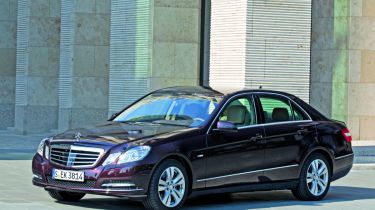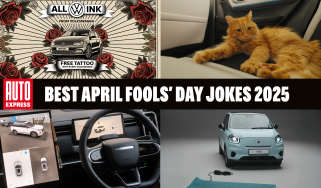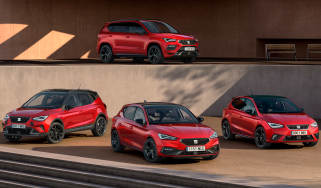Mercedes E350 BlueDIRECT
The E-Class gets a new V6 petrol engine that promises class-leading efficiency, and a smooth-shifting revised automatic gearbox too

We already loved the E-Class, but with the addition of the new V6 petrol engine, it’s better than ever. It proves diesel doesn’t always have to be the default choice for luxury cars. Company buyers can now enjoy many of the cost-saving benefits of an oil-burning engine with the smoothness and refinement of a petrol unit. The additional shove the under-bonnet tweaks deliver is barely noticeable from behind the wheel, but the updated gearbox makes a huge difference to refinement and response. While the old set-up could occasionally be frustrating and slow, the new system suits the E-Class’s character perfectly. It all adds up to an impressive luxury car.
Can this luxury saloon prove that petrol still has a long way to go? With diesels providing a mix of high performance and low running costs, the petrol saloon has fallen out of favour in recent years.
But Mercedes promises to change all that with its new E350 BlueDIRECT, as its 3.5-litre V6 engined claims a 20 per cent reduction in fuel consumption over the current model. By using direct injection and stop-start technology, the company has boosted combined economy by 8.3mpg to 41.5mpg.
Video: watch CarBuyer's video review of the Mercedes E-Class
Used - available now

2022 Mercedes
E Class
44,201 milesAutomaticPetrol2.0L
Cash £26,200
2020 Mercedes
E Class
67,779 milesAutomaticDiesel2.0L
Cash £13,600
2023 Mercedes
E Class
57,762 milesAutomaticPetrol2.0L
Cash £22,500
2020 Mercedes
E Class
56,910 milesAutomaticDiesel2.0L
Cash £23,200[[{"type":"media","view_mode":"content_narrow","fid":"69323","attributes":{"alt":"","class":"media-image"}}]]
That makes the E350 the efficiency class leader in this field by some margin, with the BMW 535i claiming 32mpg and the Audi A6 3.0 TFSI 34.4mpg. The newcomer is also the cleanest of the three, emitting 159g/km of CO2; the Audi and BMW models trail by 31g/km and 40g/km respectively. In fact, this output is nearly identical to that of the 3.0-litre diesel A6.
Most importantly, as it falls below the 160g/km threshold, the E350 is eligible for company write-down allowance – an important saving for business users. But Mercedes’ focus isn’t only on improving the model’s green credentials.
Various tweaks under the bonnet, including new air intakes, have boosted power from 288bhp to 302bhp. Torque is also slightly improved, by 5Nm to 370Nm, and it’s now delivered at 3,500rpm instead of 3,000rpm. Yet the 0-62mph time remains at 6.3 seconds, while the maximum speed is electronically limited to 155mph.
The E-Class was already a convincing package, with sharp handling and fantastic comfort and refinement. The only blot on its copybook was the occasionally unresponsive 7G-Tronic gearbox. But for the update, Merc has solved this.
An improved system, called 7G-Tronic Plus, delivers quicker and smoother shifts, thanks to a new torque converter with reduced slip and lower-friction components. This set-up will be standard on the E250, E350 and E500 models.
The new 3.5-litre petrol V6 is sure to be the pick of the range, though. Not only is it refined, smooth and punchy, it’s cleaner than the V6 diesel E-Class.
Rival: BMW 535i
sharp-looking 5-Series was crowned best executive car at our New Car Awards last year, and holds the edge for driving thrills. But it’s not as refined or comfortable as the E-Class. Fuel economy and emissions are now both well down on the Merc, too.







